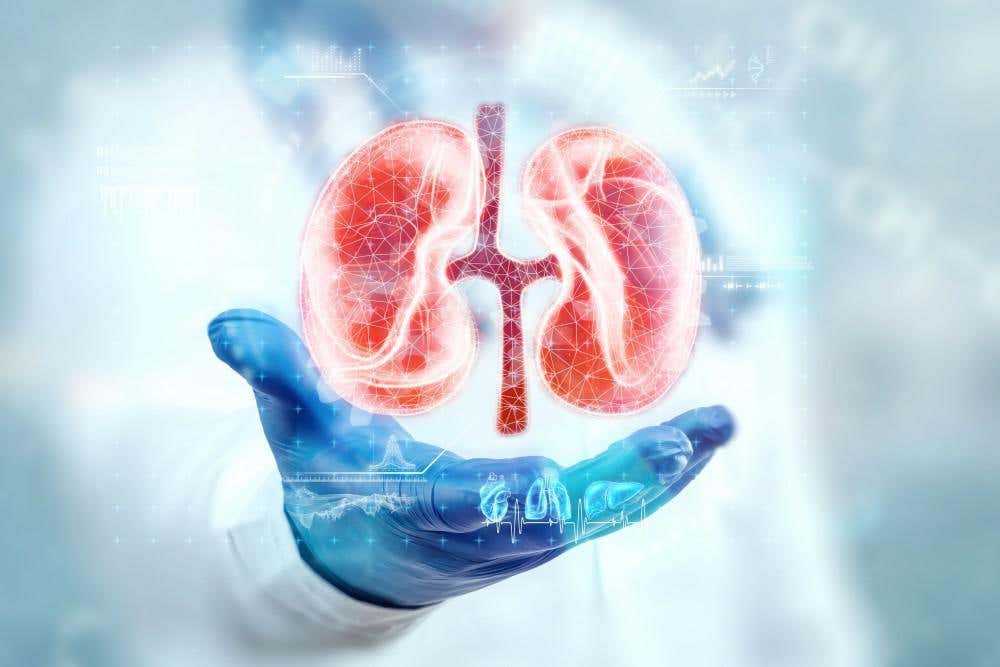Groundbreaking new treatment options for chronic kidney diseases
The kidneys, our body’s diligent detoxifying organs, play a vital role in filtering our blood and expelling waste.

[July 11, 2023: Staff Writer, The Brighter Side of News]
The kidneys, our body's diligent detoxifying organs, play a vital role in filtering our blood and expelling waste. (CREDIT: Creative Commons)
The rising tide of chronic kidney disease, a mounting global health concern, has most recently drawn significant attention in Denmark, where more than 10% of adults live with the condition. However, an illuminating study from Aarhus University has shed light on a surprising connection between a protein commonly associated with treating cardiovascular diseases and a crucial kidney function, potentially laying the groundwork for innovative therapeutic strategies.
The kidneys, our body's diligent detoxifying organs, play a vital role in filtering our blood, expelling waste, and reintroducing critical substances such as sugar and amino acids back into circulation.
However, kidney failure, culminating in an unhealthy buildup of substances in the body, often precipitates severe health consequences. The resulting toxicity and fluid retention frequently lead to cardiovascular complications, including heart attacks and strokes—Denmark's most prevalent causes of death.
Chronic kidney disease doesn't merely bring physical discomfort; it also escalates the risk of developing life-threatening cardiovascular conditions. But hope is now emerging from an unexpected quarter: the cardiovascular system itself. A newly published research paper hints at an innovative treatment strategy that might emerge from this domain.
Related Stories
At the center of this promising study is Associate Professor Kathrin Weyer from the Department of Biomedicine at Aarhus University. Her findings concerning the protein PCSK9, known for its influence on blood cholesterol levels and its link to cardiovascular disease, offer a glimpse into a novel therapeutic avenue.
"We have discovered that PCSK9, in addition to its known effects on cholesterol and cardiovascular health, has unique and previously unknown impacts on kidney function," Weyer revealed. "Our research shows that PCSK9 influences a kidney receptor responsible for protein reabsorption, a critical factor in maintaining balanced protein levels in urine. This could potentially provide a new treatment approach for patients suffering from kidney overload and subsequent proteinuria," she elaborated.
This 'megalin receptor,' as it is called, holds the key to the kidney's capacity to reabsorb filtered proteins, thus influencing the amount of protein found in urine. A malfunctioning megalin receptor can overload the system, causing proteinuria—an excess of protein in the urine—which is not only a significant symptom of kidney disease but also a serious risk factor for chronic kidney disease development. In this scenario, the megalin receptor's functionality is negatively regulated by PCSK9.
Graphical abstract: Proteinuria is a prominent feature of chronic kidney disease. Interventions that reduce proteinuria slow the progression of chronic kidney disease and the associated risk of cardiovascular disease. (CREDIT: Kidney International)
It's important to note that PCSK9 isn't an unfamiliar name in the medical field. It's already recognized as a therapeutic target and is actively used in treating patients suffering from cardiovascular ailments globally. PCSK9 inhibitors, designed to combat high cholesterol levels, are standard treatments today. Consequently, the pivotal question emerging from Weyer's research is whether the inhibition of PCSK9 could also serve as an effective treatment strategy for kidney diseases.
"Chronic kidney disease is an escalating issue, both domestically and globally," stressed Weyer. "We urgently need new therapeutic options. Our study presents an entirely new molecular mechanism revealing how PCSK9 influences proteinuria development—an aspect hitherto unknown."
Human megalin interacts with human PCSK9 in the kidney proximal tubule. Co-immunofluorescence staining for PCSK9 (green), megalin (magenta), AQP-2 (blue), uromodulin (red), calbindin (orange), AQP1 (blue), EEA1 and LAMP1 (dark orange) in human kidney sections. Scale bars = 50 μm. (CREDIT: Kidney International)
Weyer and her research team are enthusiastic about pursuing the potential of PCSK9 inhibitors as a novel treatment approach for kidney diseases. Their findings could pave the way for groundbreaking therapeutic options that may significantly improve the lives of those living with chronic kidney disease.
"We're laying the groundwork for future investigations into the therapeutic effects of PCSK9 inhibition on kidney diseases," Weyer shared. "If the benefits are proven, it won't be long before we can offer a revolutionary new treatment method to kidney patients."
Associate Professor Kathrin Weyer from the Department of Biomedicine at Aarhus University. (CREDIT: Tariq Mikkel Khan, Danmarks Frie Forskningsfond)
This prospect shines a ray of hope in what often seems like a bleak landscape for those grappling with chronic kidney disease, promising not only improved quality of life but also a potential reduction in related cardiovascular complications.
The research results - more information:
Study type: Basic research.
Collaborators: The study was conducted in collaboration between researchers from Aarhus University, Aarhus University Hospital, Regionshospitalet Viborg, and Draupnir Bio.
External funding: Danish Independent Research Fund Sapere Aude Research Leader, Novo Nordisk Foundation, Augustinus Foundation, and Danish Cardiovascular Academy.
Potential conflicts of interest: Draupnir Bio is a biotechnology company working on a new type of PCSK9 inhibitors.
Read more in the scientific article
Note: Materials provided above by The Brighter Side of News. Content may be edited for style and length.
Like these kind of feel good stories? Get the Brighter Side of News' newsletter.



